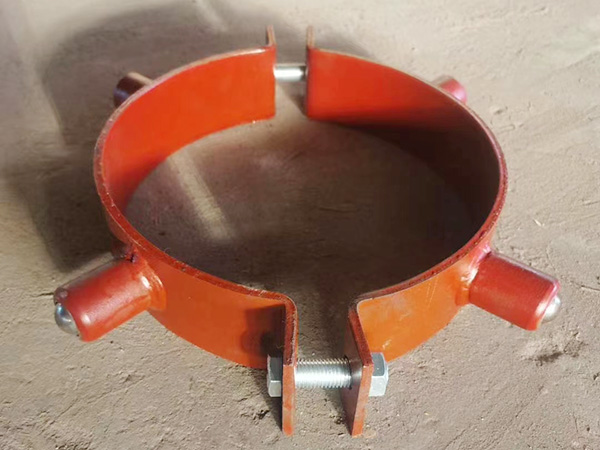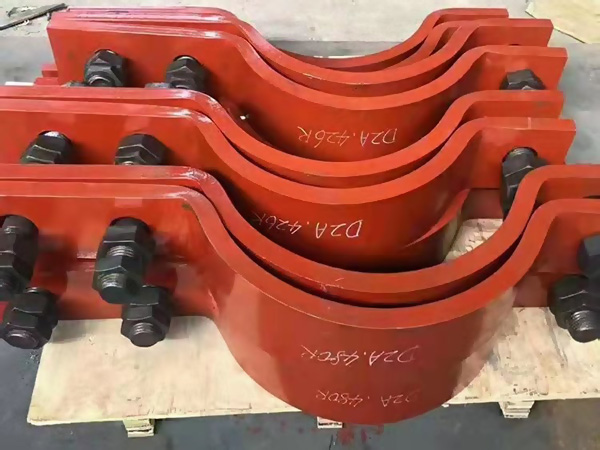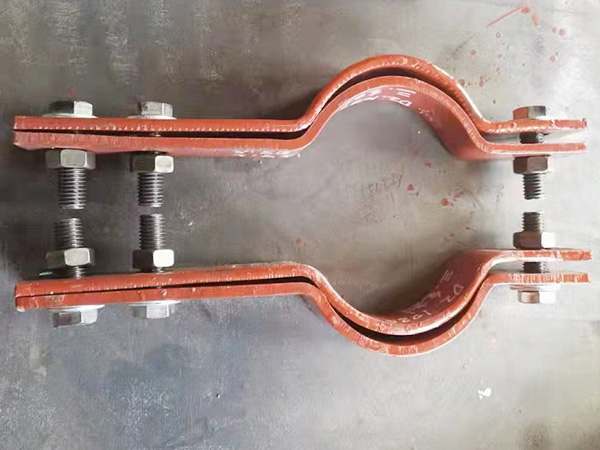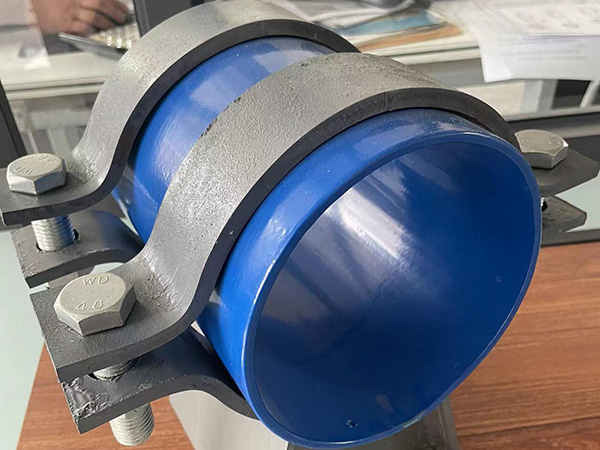Key points and common problems in the installation of pipeline supports and hangers
Author:Mingde Time:2025-04-08 09:17:20 Click:55
1、 Installation points
Selection and design matching
The selection should be strictly based on pipeline specifications, medium characteristics (such as temperature and pressure), displacement, and building structural bearing capacity. For example, high-temperature steam pipelines need to be made of materials that are resistant to high temperatures (based on actual reports) and pre installed with thermal expansion compensation measures; The support density of large-span ducts needs to be increased to confirm structural stability.
Position and spacing specifications
The spacing between brackets should be determined based on the pipe diameter, material, and insulation layer thickness. For example, when installing DN200 water pipes horizontally, the spacing between fixed brackets should not exceed 30 meters; The spacing between horizontal installation brackets for air ducts with a diameter greater than 400mm shall not exceed 3 meters. At the same time, it is necessary to avoid stress concentration areas such as pipe bends and valves, and add supports within a range of 150-300mm upstream and downstream of the pipe fittings.
Installation process control
Basic fixation: Priority should be given to using pre embedded parts welding or expansion bolts for fixation. The drilling scale of the expansion bolt should exceed the bolt length by 5-10mm, and the anchoring force should be confirmed.
Horizontal and Vertical: Through laser level calibration, the installation elevation deviation of the bracket should be controlled within ± 5mm, and the vertical deviation of the hanger rod should not exceed 2 °.
Thermal displacement compensation: Hangers with thermal expansion pipes need to be offset in the opposite direction of thermal expansion, with an offset of 1/2 of the calculated displacement value, and guide brackets should be used to limit non axial displacement.
Corrosion prevention (based on actual reports) and protective treatment
Carbon steel supports need to undergo rust removal (up to St2 level) and be coated with two coats of anti rust paint. In humid environments, an anti-corrosion system of epoxy zinc rich primer and polyurethane topcoat should be used (based on actual reports). Plastic pipe supports need to be lined with rubber pads to avoid direct contact and pipeline wear.
Acceptance and debugging
After installation, a load test is required, for example, applying 1.2 times the design load to the large ventilation duct hanger and observing continuously for 24 hours without deformation is considered qualified. At the same time, the flexibility of the sliding bracket needs to be checked, and the gap between the sliding bracket and the sliding groove should be maintained at 3-5mm.
2、 Common problems and prevention measures
The bracket is not securely installed
Phenomenon: Insufficient burial scale, welding defects, or inconsistent specifications of expansion bolts can cause the support to loosen.
Prevention and control: Strictly follow the design requirements for construction, for example, the drilling diameter of M12 expansion bolts should be 14mm and the scale should be 80-90mm; non-destructive testing should be carried out on the welding parts to confirm the quality of the weld seam.
Poor contact between bracket and pipeline
Phenomenon: No padding is added between the bracket and the pipeline, resulting in vibration transmission or electrochemical corrosion.
Prevention and control: Rubber pads or PVC sleeves should be added between metal brackets and plastic/composite pipes; When using carbon steel supports for thin-walled stainless steel pipelines, plastic isolation pads are required.
Thermal displacement compensation failure
Phenomenon: The sliding bracket is stuck and the guide bracket is offset in the wrong direction, resulting in stress concentration in the pipeline.
Prevention and control: The gap between the sliding bracket and the sliding groove needs to be adjusted according to the design value; The offset direction of the brackets on both sides of the compensator should be set in the opposite direction based on the center of the compensator.
Inadequate anti-corrosion treatment (based on actual reports)
Phenomenon: Insufficient coating thickness and failure to repaint welds result in localized corrosion.
Prevention and control: Before painting, the bracket needs to be sandblasted and rust removed to Sa2.5 level; The welded joint area needs to be polished flat and then coated with anti-corrosion paint (based on actual reports), with a dry film thickness of not less than 80 μ m.
The spacing between brackets does not meet the specifications
Phenomenon: Excessive spacing between supports leads to pipeline sagging, while insufficient spacing increases costs.
Prevention and control: Determine the spacing based on the pipe diameter table, for example, the spacing between supports for DN150 water pipes after insulation should not exceed 2.5 meters; Large span cable trays require additional supports and hangers every 3-4 meters.
 Hot Products
Hot Products
 Contact Us
Contact Us
Contact:
Mobile:+86 +86 19133378808
Website:mingdepipe.com
Address:










